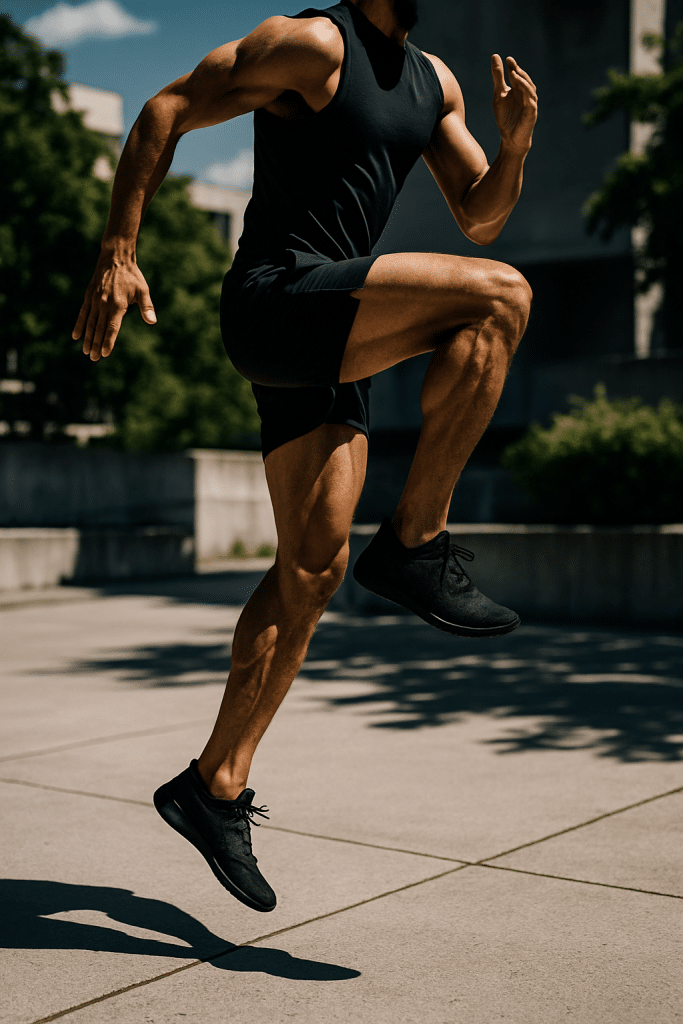Introduction: The Benefits of Calisthenics for Leg Strength
If you’re like me, someone passionate about fitness and always looking to level up your workouts without relying heavily on machines or weights, calisthenics might just be your new best friend — especially when it comes to leg training. Calisthenics exercises for legs are incredible because they target strength, balance, and mobility using your own bodyweight. That means no expensive gym memberships or bulky equipment cluttering your space. But rather than being “just bodyweight moves,” these exercises pack enough punch to build muscle, improve endurance, and even boost explosive power when done right.
In this detailed guide, I’ll walk you through the key aspects you need to know to get the most out of your leg calisthenics routine. We’ll start by exploring leg muscle anatomy so you understand which muscles you’re targeting, then dive into applying progressive overload, warming up effectively, and finally detailed breakdowns of the six powerhouse calisthenics leg exercises that will shape your lower body. Plus, I’m sharing tips on integrating equipment like the TRX Home2 System Suspension Trainer and plyometric boxes, strategies for recovery, and common pitfalls you want to avoid on your journey towards stronger legs. So, if you’re ready to move from good to great and see real gains, this is the article you’ve been searching for!
Understanding Leg Muscle Anatomy for Effective Training
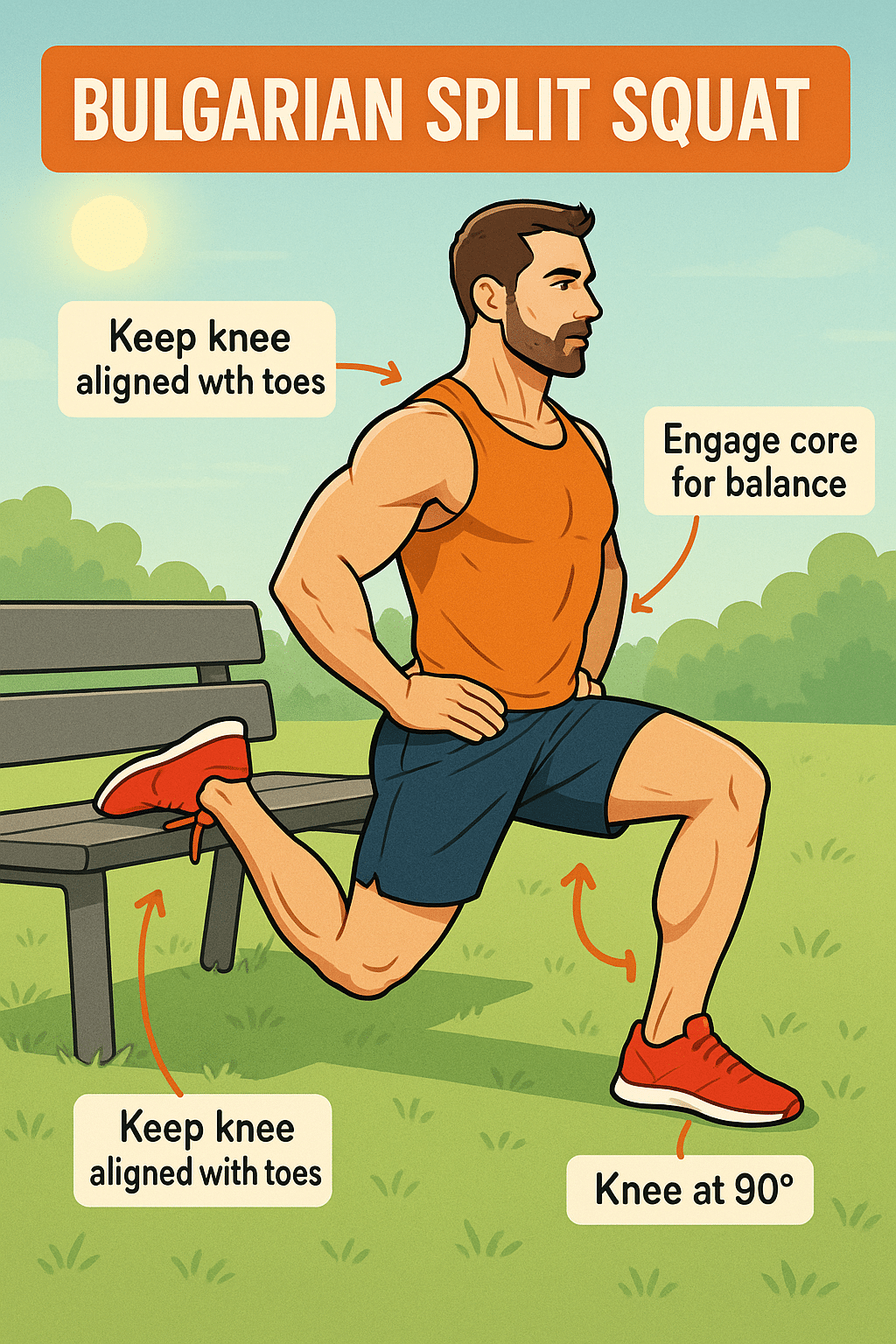
Before you start hammering out reps of leg exercises, it’s important to grasp the anatomy involved. Knowing your muscle groups—the quads, hamstrings, glutes, and calves—helps you train smarter and avoid imbalances that can lead to injury.
The Role of Quads, Hamstrings, Glutes, and Calves
Think of your legs like a well-orchestrated team. The quadriceps, the big muscles on the front of your thighs, are crucial for knee extension and powerful movements like squatting and jumping. Behind those, the hamstrings play the role of knee flexors and hip extensors, balancing the quads and providing stability. The glutes, often called the powerhouse of the hips, are responsible for hip extension, external rotation, and contributing massively to athletic moves such as sprinting and climbing. Last but not least, the calves add explosive power, ankle stability, and aid in ground contact mechanics during running and jumping.
Ignoring any one of these groups can cause issues. For example, underdeveloped hamstrings compared to quads can increase ACL injury risk due to poor balance in muscle forces around the knee. That’s why comprehensive calisthenics exercises for legs should hit all these muscles, not just the obvious ones.
How Neuromuscular Activation Enhances Performance
Now, what really sets effective calisthenics apart from mindless repetition is neuromuscular activation. This is your nervous system efficiently recruiting muscle fibers to work harder and more precisely. Certain bodyweight exercises train this system well, improving coordination and control. Think of pistol squats or Bulgarian split squats—these demand balance, core engagement, and precise activation of leg muscles in sequence.
By practicing exercises that challenge your neuromuscular system, you develop functional strength. This means your muscles don’t just bulk up; they learn to perform better in everyday activities and sports, reducing injury risk and improving longevity.
Progressive Overload Principles in Bodyweight Leg Training
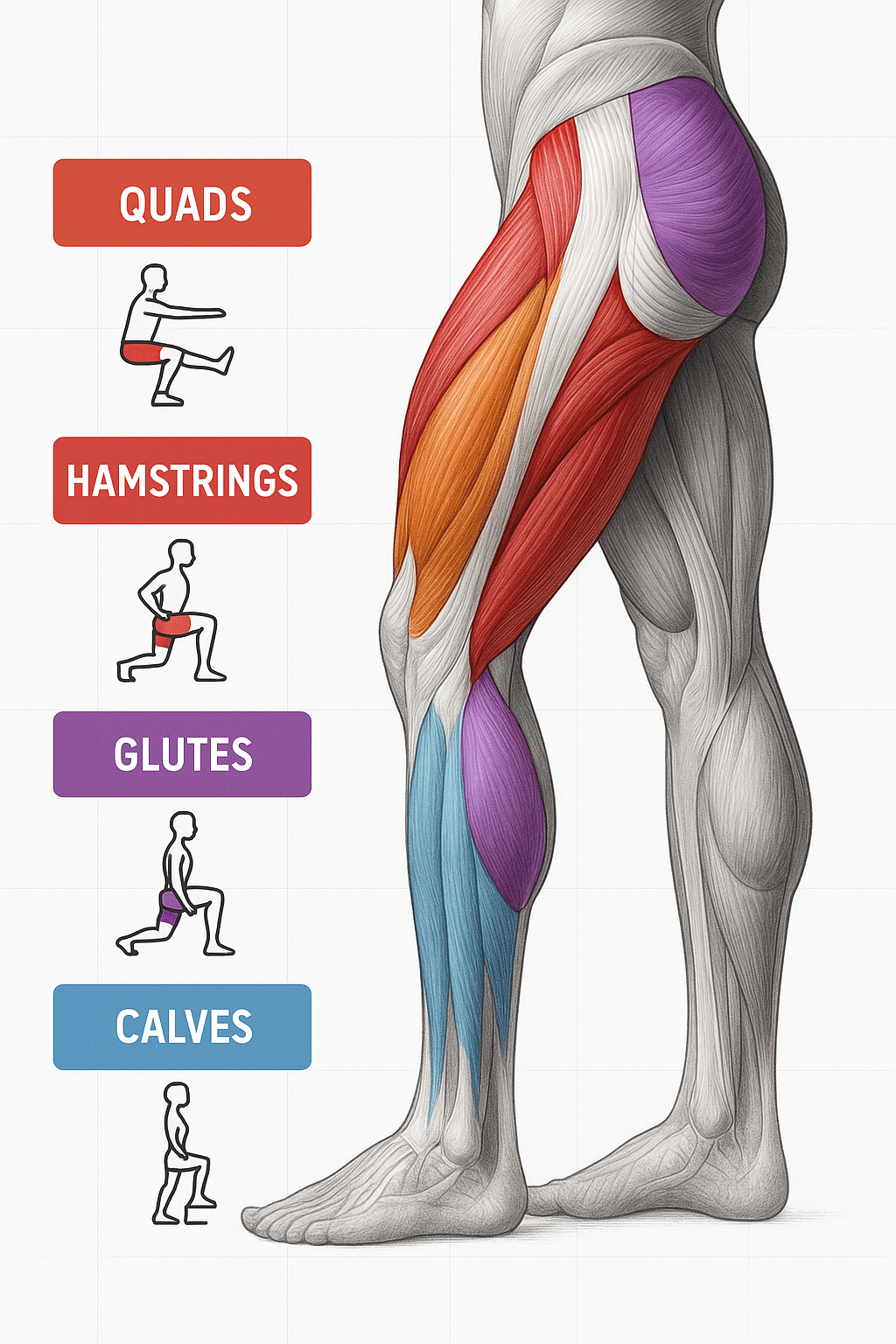
Muscle growth and strength gains come from progressive overload: gradually making your muscles work harder over time. But how do you apply progressive overload when you’re working with just your bodyweight?
Techniques to Increase Volume and Intensity Without Equipment
Since you can’t just add more plates like in the gym, you get creative. To increase volume, simply add more reps or sets, or reduce rest time between sets. You might start with three sets of 8 pistol squat negatives and push to 4 or 5 sets as you get stronger.
For intensity, make exercises harder by changing leverage or range of motion. For example, slow down the tempo. Lower yourself through a Bulgarian split squat over 4 seconds instead of 1 second — this adds time under tension, a key driver of hypertrophy. Another way is to include isometric holds at the bottom of a squat or pistol squat to deepen muscle engagement.
Incorporating Tempo and Explosiveness
Don’t underestimate the power of tempo variation combined with plyometric (explosive) movements. Slow eccentric phases (muscle lengthening) build control and force production, while explosive contractions improve power.
Jump squats and broad jumps are perfect plyometric exercises that teach your muscles to generate maximum force quickly. Try combining a slow descent squatted position with an explosive jump on the way up for an all-around leg burner.
Dynamic Warm-Up and Mobility Drills for Leg Calisthenics
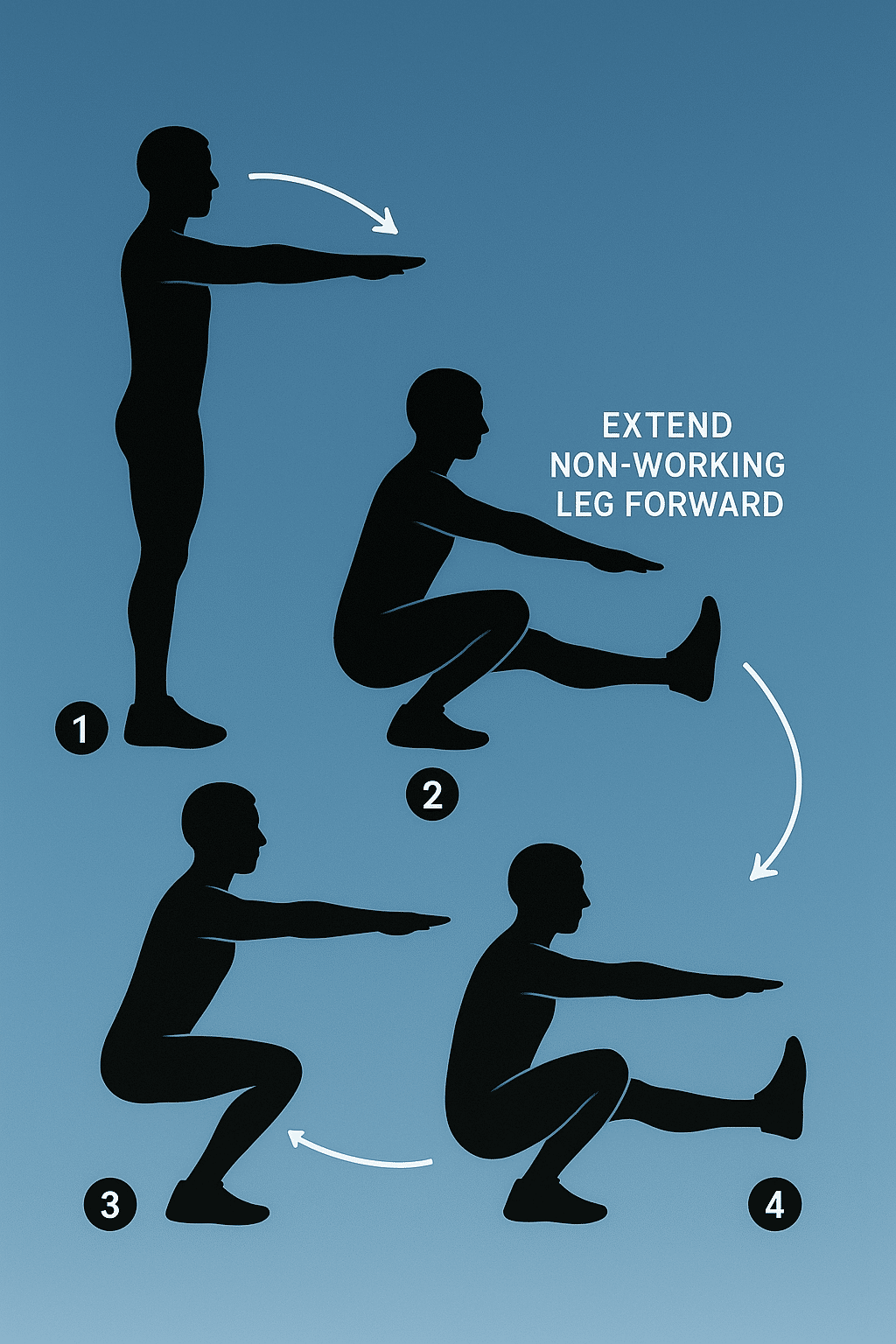
Stretching cold muscles before intense work isn’t ideal. Instead, we want a dynamic warm-up that prepares your muscles, tendons, and joints for action by increasing blood flow and improving mobility.
Importance of Pre-Workout Mobility
Mobility is the foundation of good form and injury prevention. If your hips or ankles are tight, you may compensate elsewhere, increasing injury risk and reducing effectiveness. A 5-10 minute dynamic warm-up also wakes up your nervous system, making your muscles “ready to go.”
Sample Dynamic Warm-Up Routine
Try this before every leg session:
- Leg swings: Front-to-back and side-to-side, 15 reps per leg
- Walking lunges with reach: Step forward, twist torso toward lead leg
- Hip circles: Hands on hips, rotate hips clockwise and counterclockwise
- High knees: 30 seconds, emphasizing quick foot lift
- Ankle circles: Rotate ankle clockwise, then counterclockwise, 10 reps each side
- Bodyweight squats: 15 slow reps focusing on depth and control
This routine enhances joint range and activates muscles called upon during your workout.
The 6 Essential Calisthenics Exercises for Legs
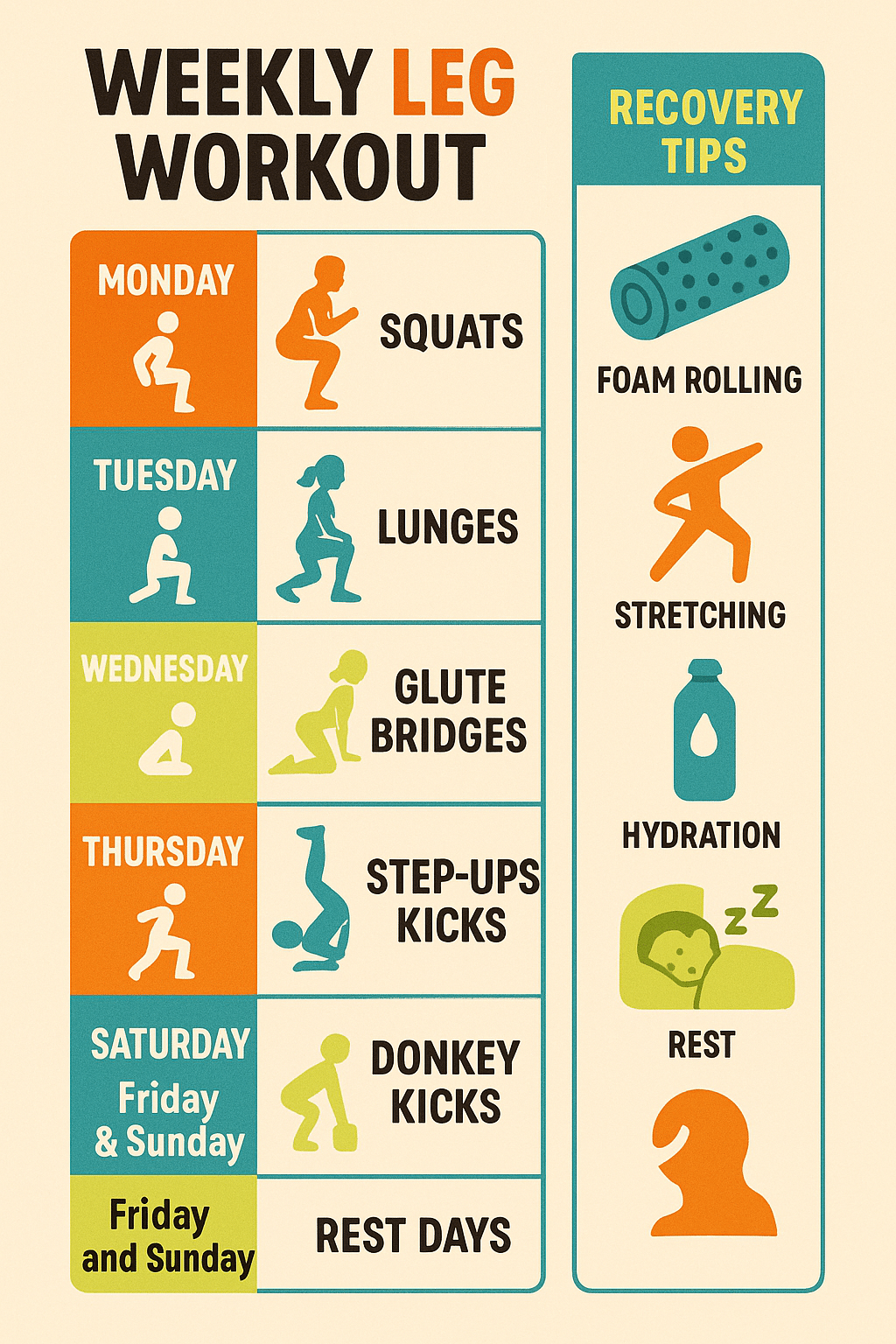
Here’s where the rubber meets the road. These six exercises have proven to build leg strength, muscle growth, balance, and power — all with just your bodyweight.
1. Pistol Squats: Mastering Unilateral Strength and Balance
The pistol squat is the holy grail of unilateral leg strength. Balancing on one leg while squatting deep challenges quads, glutes, hamstrings, and core all at once.
How to Perform:
- Stand on one leg, extend the other leg straight in front.
- Slowly bend your standing leg and lower yourself down while keeping extended leg off the ground.
- Go as deep as your mobility allows, then push back up.
- Use a support initially (like a TRX Home2 Suspension Trainer) for balance until confident.
Key Benefits:
- Improves balance & ankle stability
- Corrects unilateral weaknesses
- Builds deep hip and knee mobility
Common Mistakes to Avoid:
- Letting knee cave inward
- Rounding the back forward
- Letting the extended leg drop too low
2. Bulgarian Split Squats: Enhancing Stability and Hypertrophy
This exercise targets the quads and glutes intensely while forcing balance.
How to Perform:
- Place rear foot on a bench or elevated surface.
- Lower hips until front thigh is parallel to the floor.
- Push through the front heel to stand back up.
- Add tempo control (slow eccentric phase) for hypertrophy.
Benefits:
- Builds single-leg strength and stamina
- Good for correcting muscle imbalances
- Loads glutes and thighs deeply
3. Jump Squats: Developing Explosive Power
For those aiming to increase power and athleticism, jump squats are excellent.
How to Perform:
- Stand with feet shoulder-width.
- Squat down with elbows between knees.
- Explode upward, jumping as high as possible.
- Land softly and immediately go into next squat.
Benefits:
- Trains fast-twitch fibers for explosiveness
- Improves jump height and acceleration
- Boosts metabolic conditioning
4. Step-Ups: Functional Strength for Everyday Movement
Simple but powerful, step-ups mimic real-life activities like climbing stairs or hiking.
How to Perform:
- Stand facing a bench or sturdy box (~12-18 inches high).
- Step one foot up, push through the heel to lift body.
- Lower back down with control.
- Alternate legs.
Benefits:
- Effective unilateral quad and glute training
- Easy to scale by increasing step height
- Enhances balance and coordination
5. Broad Jumps: Building Lower Body Power and Coordination
Similar to jump squats but focusing on horizontal distance, broad jumps develop leg power in a forward direction.
How to Perform:
- Stand shoulder-width.
- Swing arms back and bend knees.
- Explode forward, jumping far and landing softly.
- Reset and repeat.
Benefits:
- Enhances hip extension strength
- Develops coordination and balance
- Boosts leg power applicable to sports
6. Glute Bridges: Activating the Posterior Chain
Often overlooked, glute bridges target hamstrings and glutes, balancing your leg development.
How to Perform:
- Lie on your back with knees bent and feet flat.
- Drive hips up by squeezing your glutes.
- Hold at the top for 1-2 seconds, lower slowly.
- Extend to single-leg bridges for added challenge.
Benefits:
- Improves hip extension strength
- Reduces risk of lower back and knee injuries
- Excellent for muscle hypertrophy of posterior chain
Integrating Equipment to Amplify Calisthenics Leg Workouts
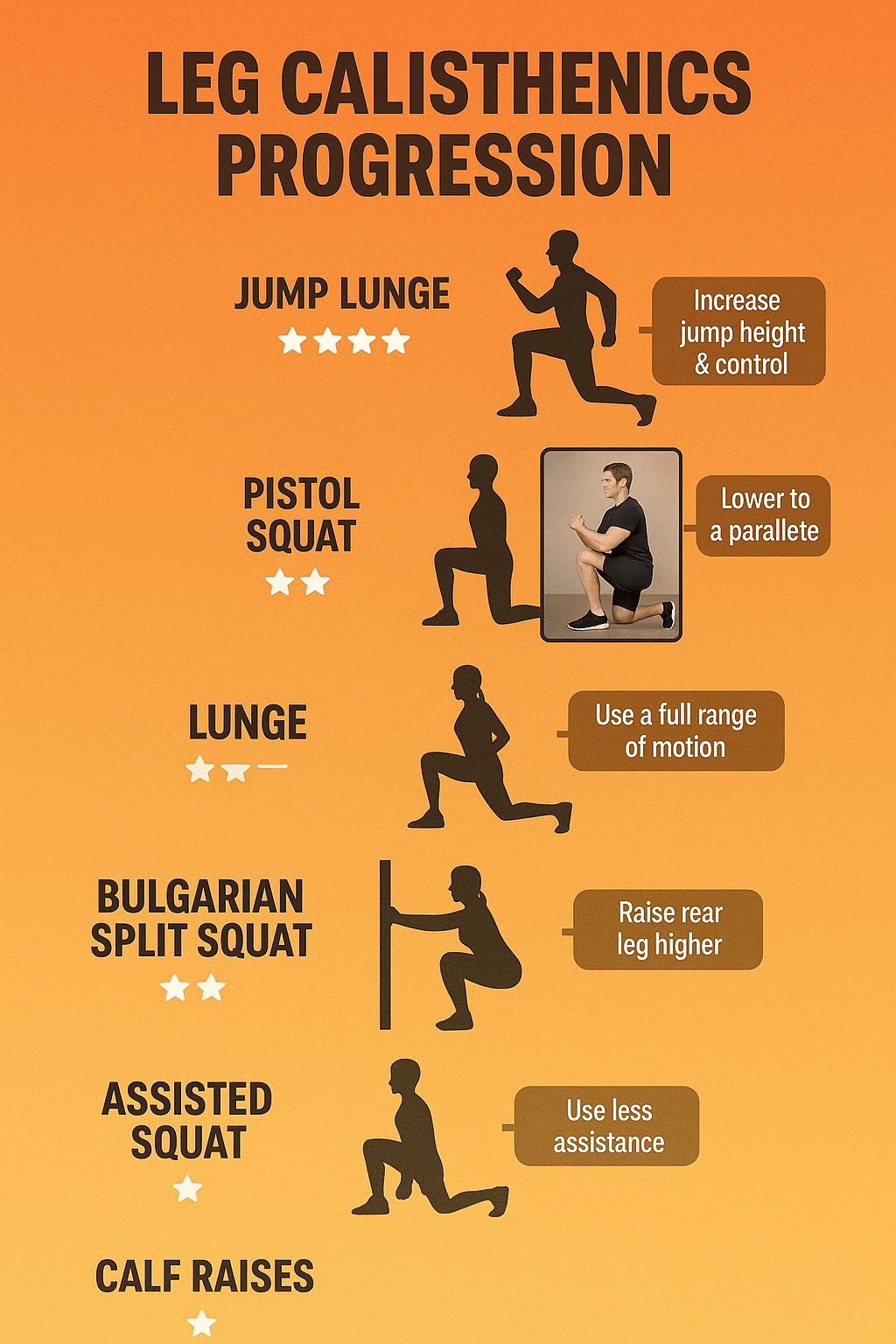
To elevate your calisthenics routine, certain tools can add intensity, stability, and variety.
Using the TRX Home2 System Suspension Trainer to Enhance Leg Exercises
The TRX Home2 System Suspension Trainer uses your bodyweight and gravity to build strength through adjustable angles and leverage.
- Supports exercises like assisted pistol squats and Bulgarian split squats, allowing you to control difficulty.
- Great for increasing time under tension in squats or step-ups.
- Portable with door anchor and travel carrying bag—ideal for home or travel workouts.
- Comes with a TRX App offering a 30-day free trial packed with expert leg workouts.
Benefits of Rogue Fitness Paralettes for Stability and Core Engagement
While primarily used for upper body moves, Rogue Fitness Paralettes also enhance leg training.
- Help develop core stability and balance critical in unilateral leg exercises.
- Can be used for L-sits combined with leg raises for hip flexor and quad strength.
- Durable and available in different types: Rogue Formed Parallettes and Bolt Together Parallettes for customizable setups.
How Plyometric Boxes from Titan Fitness Can Boost Explosiveness and Variety
Plyometric boxes elevate your jump training by offering adjustable heights and stable platforms.
- Perfect for box jumps, step-ups, and depth jumps.
- Adjustable models allow progression as you increase power.
- Foam and wood options available for safety and durability.
- Add variety by integrating lateral step-ups or broad jumps onto platforms.
Structuring an Effective Weekly Leg Workout Plan
An effective calisthenics leg routine balances strength, power, balance, and recovery.
Combining Calisthenics with Plyometric Training
For overall leg development, mix strength-focused exercises (pistol squats, Bulgarian split squats) with plyometric drills (jump squats, broad jumps) across the week. For example:
- Monday: Strength focus (slow pistol squats, glute bridges)
- Wednesday: Plyometrics (box jumps, jump lunges)
- Friday: Mixed session (step-ups, broad jumps, Bulgarian split squats)
Balancing Unilateral and Bilateral Movements
Though calisthenics favors unilateral exercises to correct imbalances, including bilateral drills like jump squats or glute bridges maintains symmetry.
Accounting for Recovery and Avoiding Overtraining
Muscles grow when resting, not just when training. I recommend integrating rest or active recovery days between leg sessions. Use mobility drills and foam rolling, stay hydrated, and don’t neglect sleep.
Recovery Strategies for Optimal Leg Muscle Growth and Injury Prevention
Recovery is the secret ingredient often overlooked by fitness enthusiasts chasing quick gains.
Stretching and Mobility Post-Workout
Hold static stretches for quads, hamstrings, and calves for at least 30 seconds each post-workout. Incorporate foam rolling to reduce muscle tightness.
Using Tools Like the Gaiam Balance Ball Chair for Core Strength and Postural Support
The Gaiam Balance Ball Chair promotes subtle core activation even when sitting. Better core support means enhanced overall movement quality for calisthenics exercises.
Importance of Hydration, Nutrition, and Rest
Drink plenty of water, especially on workout days. Protein intake of about 1.6-2.2g/kg of bodyweight optimizes muscle repair. Prioritize 7-9 hours of sleep nightly for full recovery.
Advanced Progressions and Variations to Keep Leg Training Challenging
As your strength improves, scaling exercises will prevent plateaus.
From Beginner to Advanced: Scaling the 6 Core Exercises
- Pistol Squats: Use TRX assist, progress to unassisted, add weighted backpack
- Bulgarian Split Squats: Increase depth, add jump at top
- Jump Squats: Increase height, add pauses before jump
- Step-Ups: Use higher steps or add dumbbells (Bowflex SelectTech Adjustable Dumbbells can be a safe gym alternative)
- Broad Jumps: Increase distance, perform multiple jumps in sequence
- Glute Bridges: Move to single-leg, add elevated feet or resistance bands
Incorporating Plyometric and Stability Challenges
Include obstacle hops, skater jumps, and balance holds on unstable surfaces to engage stabilizers and promote neuromuscular activation.
Combining Cardio and Calisthenics for Leg Endurance
Adding aerobic conditioning to your routine improves stamina and supports muscle recovery.
Metabolic Conditioning Benefits
High-intensity interval training (HIIT) using movements like jump squats, skater hops, and step-ups elevates heart rate, boosts calorie burn, and enhances muscle endurance.
Sample Workout Incorporating Cardio and Bodyweight Moves
Try circuit training:
- 30 seconds jump squats
- 30 seconds step-ups
- 30 seconds skater jumps
- 30 seconds rest
Repeat 4-5 rounds.
This efficiently combines cardio benefits with targeted leg work.
Common Mistakes to Avoid in Calisthenics Leg Training
Inadequate Warm-Up and Insufficient Volume
Skipping warm-ups invites injury, and undertraining won’t stimulate gains. Dynamic warm-ups are essential, and progressively increasing volume ensures muscle growth.
Neglecting Recovery and Progressive Overload
Overtraining without proper rest sets you back. Also, doing the same reps and exercises without increasing difficulty stops progress. Remember, small incremental challenges yield big results.
Frequently Asked Questions (FAQs)
1. What are the best calisthenics exercises for leg strength?
The top exercises include pistol squats, Bulgarian split squats, jump squats, step-ups, broad jumps, and glute bridges. Together, they target all major leg muscles and develop power, endurance, and balance.
2. How can I safely progress pistol squats at home?
Start with assisted variations using a support like the TRX Home2 Suspension Trainer. Focus on slow descents and deep control before attempting unassisted reps.
3. Can calisthenics alone build bigger legs?
Absolutely, if you apply progressive overload by increasing reps, sets, tempo, or complexity. Combining strength calisthenics with plyometric exercises drives hypertrophy effectively.
4. What recovery tips help after intense bodyweight leg workouts?
Post-workout static stretching, hydration, balanced nutrition rich in protein, foam rolling, and adequate rest are keys to optimal muscle repair.
5. How does using equipment like plyometric boxes or parallettes improve calisthenics leg routines?
Plyometric boxes add jump height variety and lower injury risk by providing safe landing surfaces. Parallettes improve balance and core stability, enhancing leg exercise effectiveness.
Quick Takeaways / Key Points
- Calisthenics exercises for legs develop strength, power, balance, and endurance using your bodyweight.
- Understanding leg anatomy (quads, hamstrings, glutes, calves) guides balanced training.
- Progressive overload in calisthenics comes via volume, tempo, and complexity adjustments.
- Dynamic warm-ups and mobility drills reduce injury risk and improve performance.
- Six essential exercises: pistol squats, Bulgarian split squats, jump squats, step-ups, broad jumps, and glute bridges.
- Equipment such as the TRX Home2 System, Rogue Fitness Parallettes, and plyometric boxes enhance training quality and variety.
- Proper recovery including stretching, nutrition, hydration, and rest is vital for muscle growth.
- Scaling exercises and adding cardio improves endurance and keeps workouts challenging.
Conclusion: Maximizing Leg Strength with Calisthenics and Smart Recovery
Embarking on a journey to stronger legs through calisthenics is both practical and rewarding. With a clear understanding of your leg muscle anatomy, application of progressive overload, and a mix of focused exercises like pistol squats and jump squats, you can make significant gains without heavy weights or gym access. Don’t forget that warm-ups, cool-downs, and proper recovery are crucial cogs in the machine that ensures long-term success with minimal injuries.
I encourage you to explore incorporating supportive equipment such as the TRX Home2 System Suspension Trainer for assisted progressions or Titan Fitness plyometric boxes to add explosive elements safely. These tools, combined with the proven calisthenics exercises detailed here, can help you build resilience, muscular hypertrophy, and functional power that carries into everyday life and athletic pursuits.
So go ahead, commit to this plan, stay consistent, and gradually push your limits. Remember that strength isn’t built in a day, but with smart, persistent effort, your legs will thank you with greater strength, balance, and endurance. Ready to take your leg training to the next level? Start today by picking one exercise and mastering the progressive overload technique—your future self will appreciate it!

